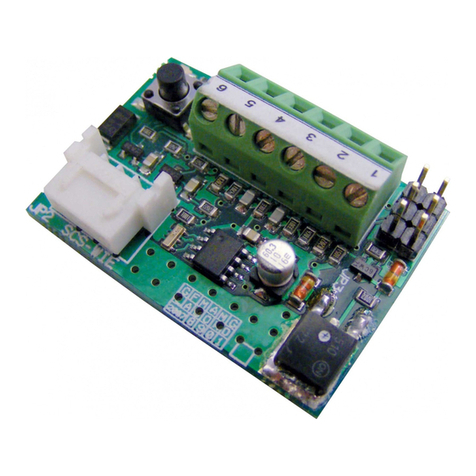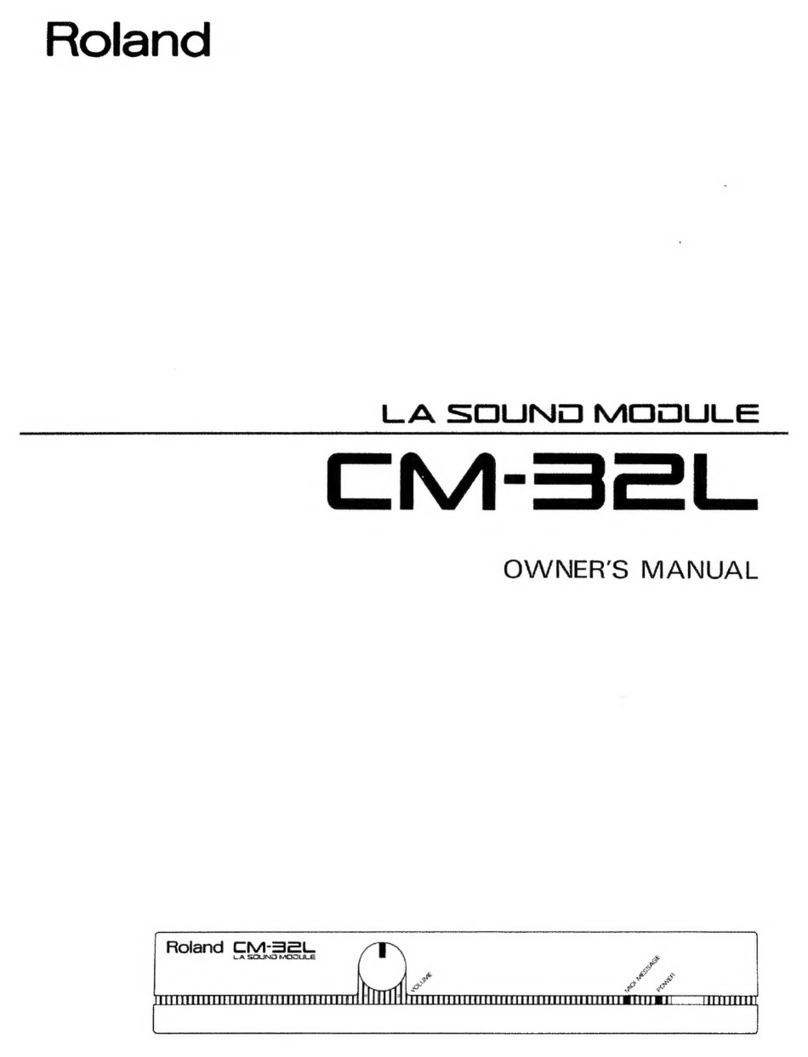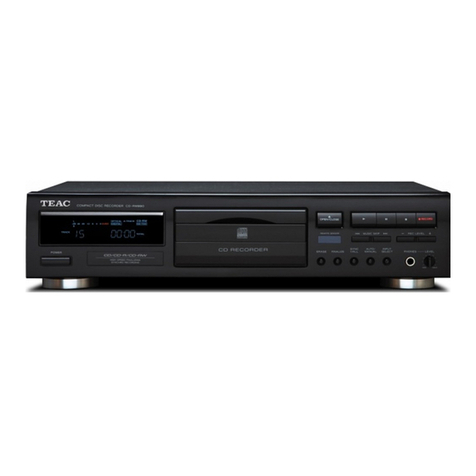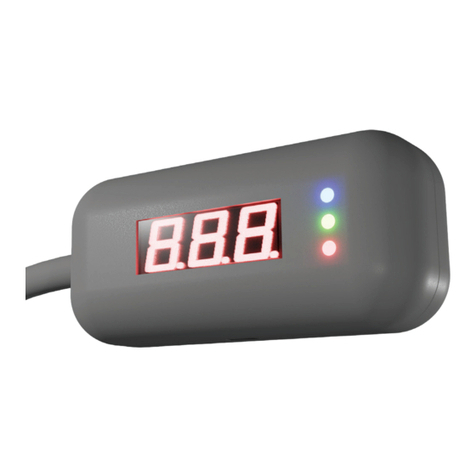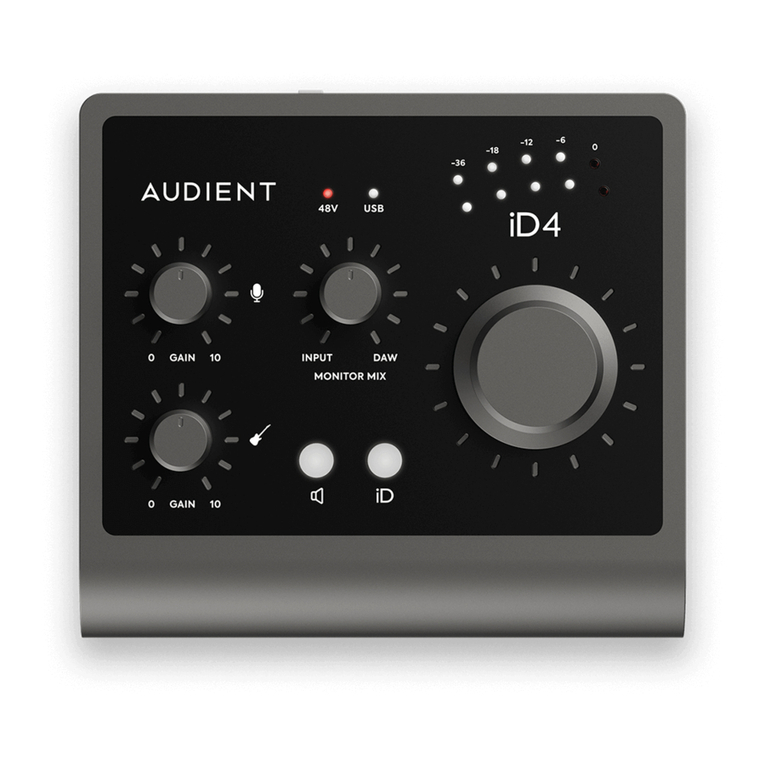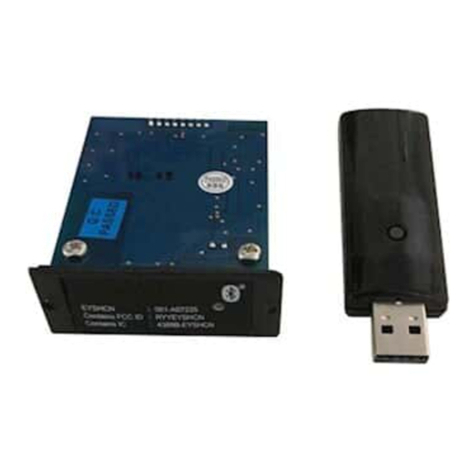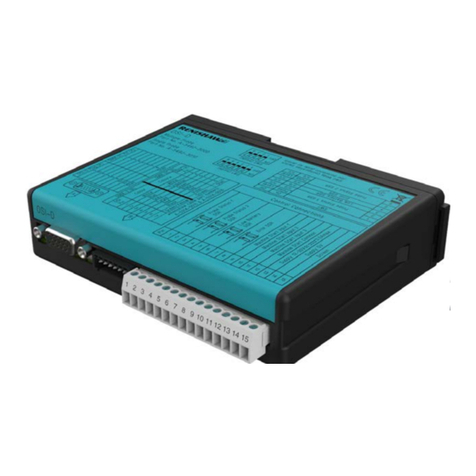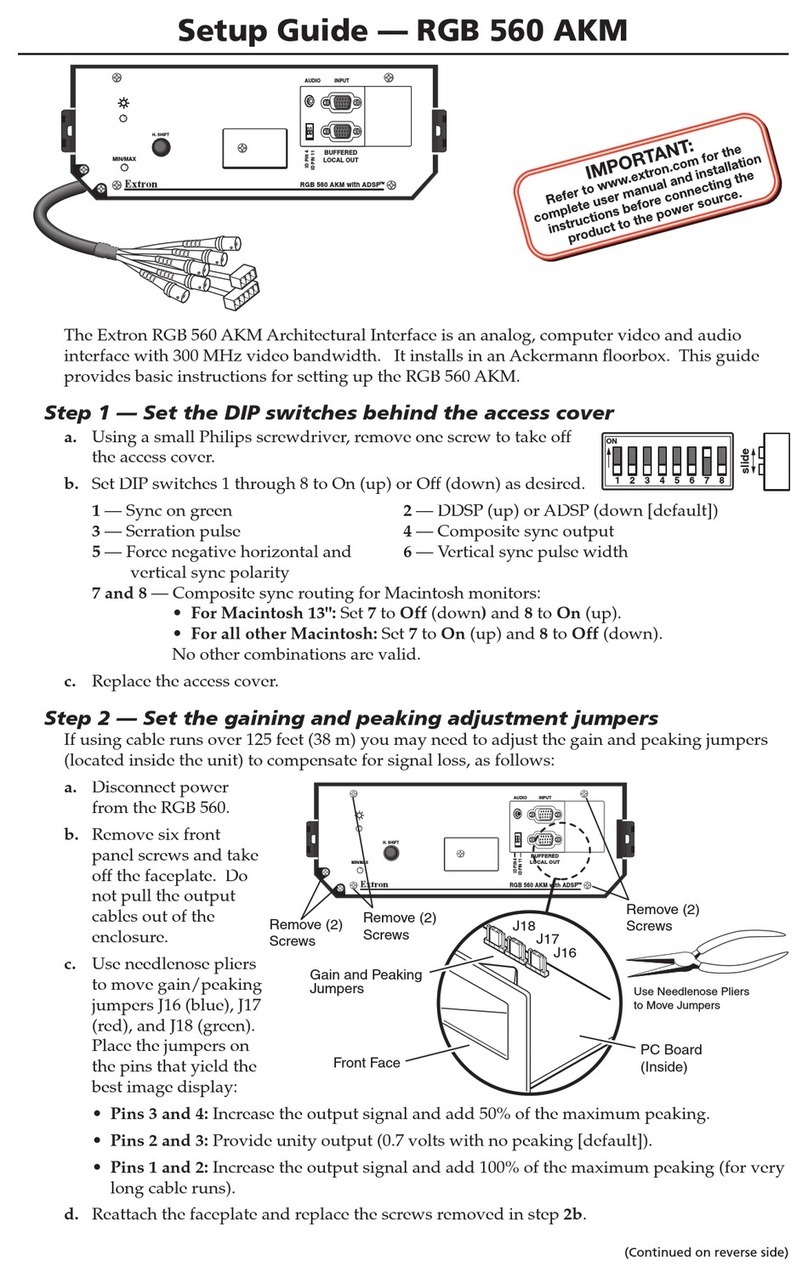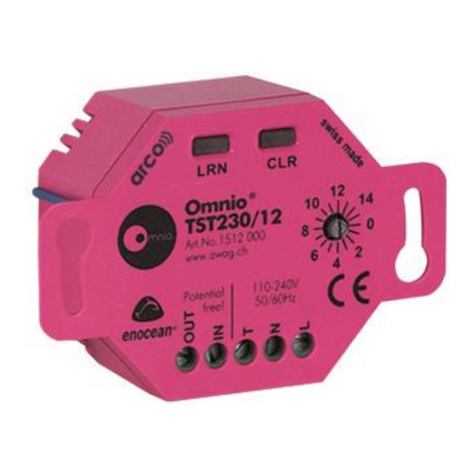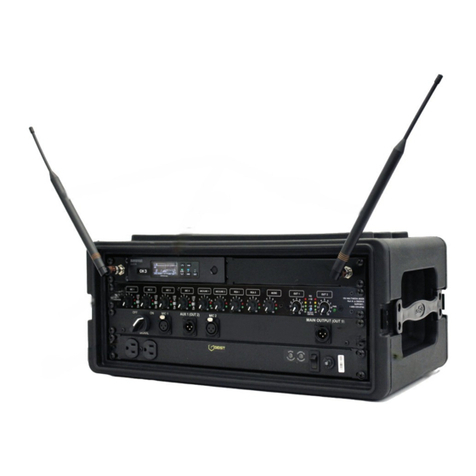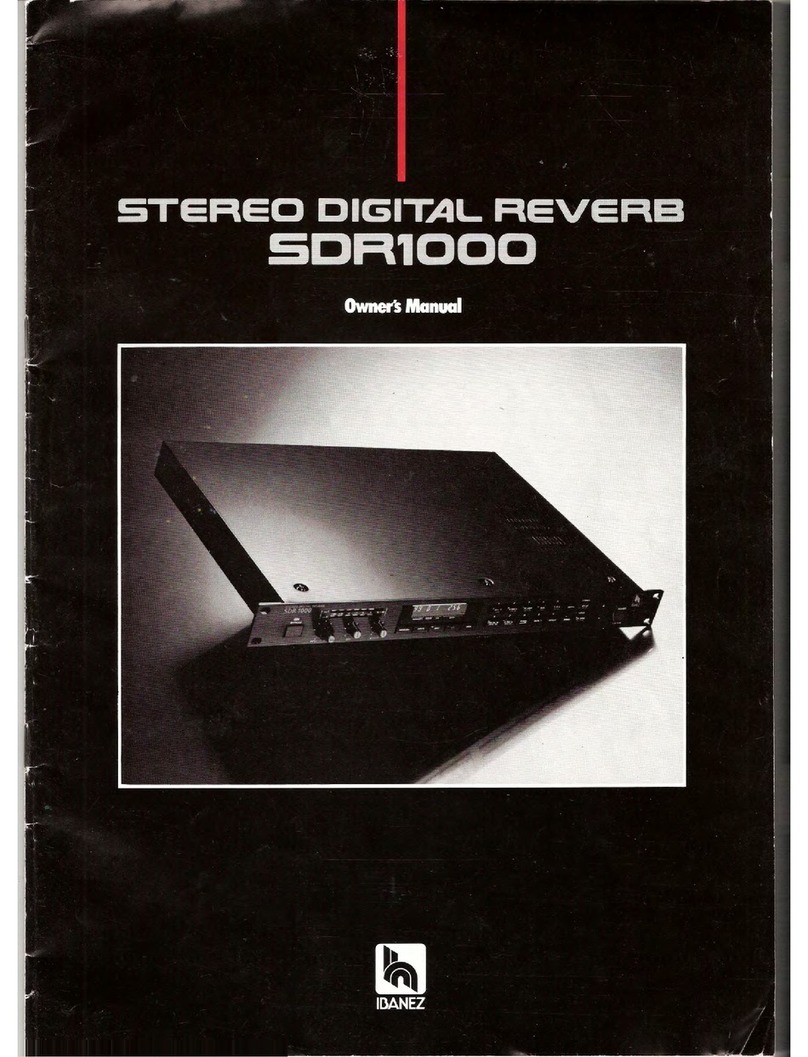Ceyear 1465 Series User manual

1465 Series
Signal Generator
Quick Start Guide
China Electronics Technology Instruments Co., Ltd

This manual applies to the following types of signal generators, based on firmware version 1.0 and
above.
1465A Signal Generator (100kHz ~ 3GHz)
1465B Signal Generator (100kHz ~ 6GHz)
1465C Signal Generator (100kHz ~ 10GHz)
1465D Signal Generator (100kHz ~ 20GHz)
1465F Signal Generator (100kHz ~ 40GHz)
1465H Signal Generator (100kHz ~ 50GHz)
1465L Signal Generator (100kHz ~ 67GHz)
1465A-V Signal Generator (100kHz ~ 3GHz)
1465B-V Signal Generator (100kHz ~ 6GHz)
1465C-V Signal Generator (100kHz ~ 10GHz)
1465D-V Signal Generator (100kHz ~ 20GHz)
1465F-V Signal Generator (100kHz ~ 40GHz)
1465H-V Signal Generator (100kHz ~ 50GHz)
1465L-V Signal Generator (100kHz ~ 67GHz)
Edition: A.3 September 2018, China Electronic Technology Instruments Co., Ltd
Address: No. 98, Xiangjiang Road, Qingdao City, China
Tel.: (86) 0532-86896691
Web: www.ceyear.com
E-mail: sales@ceyear.com
Postcode: 266555

Preface
Thank you very much for
choosing 1465 series signal
generator developed and
produced by China Electronics
Technology Instruments Co.,
Ltd. Our products, high-tech,
precise and sophisticated, are
highly cost effective among
similar products.
Pursuing to maximally meet
your demands, we will provide
you with quality measuring
instruments and first-class
after-sales services. Adhering
to our consistent tenet of "good
quality and considerate
service", we promise to provide
you with satisfactory products
and services.
Manual Number
2.827.1202 SKCN
Edition
A.3 2018.9
CHINA ELECTRONICS
TECHNOLOGY
INSTRUMENTS CO., LTD
Manual Authorization
The content of this manual is
subject to changes without
prior notice. The right of final
interpretation of the content
and terminology used in this
manual belongs to China
Electronic Technology
Instruments Co., Ltd.
The copyright of this manual
belongs to China Electronics
Technology Instruments Co.,
Ltd. Without authorization of
the company, no organization
or individual is allowed to
modify the content of this
manual or copy and
disseminate it for profit. China
Electronics Technology
Instruments Co., Ltd. reserves
the right to seek legal liabilities
of infringers.
Product Warranty
This product is under warranty
for 18 months from the date of
delivery. During the warranty
period, the manufacturer will
repair or replace the damaged
parts according to the actual
situation. Please refer to
related contracts for specific
maintenance and operation
matters.
Product Quality
Certification
We guarantee that this product
meets the specifications in the
manual as from the date it is
manufactured. The calibration
and measurement have been
completed by organizations of
metrology with national
qualifications, and relevant
information has been provided
for your reference.
Quality / Environmental
Management
This product has complied with
the quality and environmental
management systems in the
process of R&D, manufacturing
and testing. The company has
required qualification and has
passed ISO 9001 and ISO
14001 management systems.
Safety Precautions
A Warning sign indicates the
existence of danger. It prompts
users to pay attention to a
certain operation process,
operation method or similar
situation. Failure to comply with
the rules or correct operation
may cause personal injury. Do
not proceed to the next step
after completely understanding
and meeting the warning
conditions.
A Caution sign prompts some
important information, which
will not cause danger. It
prompts users to pay attention
to a certain operation process,
operation method or similar
situation. Failure to follow the
rules or operate correctly may
result in instrument damages or
loss of important data. Do not
proceed to the next step after
completely understanding and
meeting the conditions.
Caution
Be careful
Warning


1465 Series Signal Generator
Contents
1
Contents
1 Manual Navigation................................................................................................................................... 1
1.1 About the Manual.......................................................................................................................... 1
1.2 Related Documents ...................................................................................................................... 1
2 Getting Prepared..................................................................................................................................... 3
2.1 Preparations before Operation ..................................................................................................... 3
2.2 Operating System Configuration................................................................................................. 12
2.3 Appearance of Instrument........................................................................................................... 16
3 Typical Applications............................................................................................................................... 21
3.1 Setting CW RF Output Frequency at 500 MHz and Power Level at 0 dBm............................... 21
3.2 Generating AM Signals: LO Frequency of 3.5 GHz, Modulation Rate of 1 kHz, and AM Depth of
30%................................................................................................................................................... 24
3.3 Generating Pulse Modulation Signals: LO Frequency of 3.5 GHz, Pulse Width of 50 us, and
Period of 1 ms................................................................................................................................... 26
3.4 Configuring Step Sweep: Start Frequency of 1 GHz, Stop Frequency of 3 GHz, and 5 Step
Points ................................................................................................................................................ 27
3.5 Configuring List Sweep: Start Frequency of 1 GHz, Stop Frequency of 3 GHz, and 5 List Points29
3.6 Configuring Ramp Sweep: Start Frequency of 1 GHz, Stop Frequency of 3 GHz .................... 31
3.7 Configuring Baseband: Data Source PN Sequence, Modulation Type QPSK, and Code Element
Rate of 4 Msps.................................................................................................................................. 32
3.8 Sequence Playback Function ..................................................................................................... 34
3.9 Arbitrary Wave Playback Function.............................................................................................. 36
3.10 Selecting ALC Bandwidth ......................................................................................................... 38
3.11 Setting Reset State................................................................................................................... 39
3.12 Storing / Calling a User State ................................................................................................... 40
3.13 Copying / Moving / Deleting Files............................................................................................. 42
4 Getting Help........................................................................................................................................... 43
4.1 Basic Checks .............................................................................................................................. 43
4.2 Help Information.......................................................................................................................... 44
4.3 Repair.......................................................................................................................................... 45

1465 Series Signal Generator
Contents
2

1 Manual Navigation
1.1 About the Manual
1
1 Manual Navigation
This chapter introduces the function, chapters and main contents of the Quick Start Manual for 1465
Series Signal Generator, as well as instrument-related documents provided to users.
About the Manual ………………………………………………………………………………………1
Relevant Documents …………………………………………………………………………………1
1.1 About the Manual
This manual introduces the basic functions and operation methods of 1465 series signal generator.
It describes such information as the operations before startup, system settings, features of front and rear
panels, basic operation methods and examples, simple fault diagnosis and repair methods, so as to help
you get familiar with and master the operations and key points of this instrument as soon as possible. In
order to facilitate your proficiency in using the instrument, please read this manual carefully before
operating the instrument, and follow this manual for correct operation.
This Quick Start Manual contains the following chapters:
Getting Prepared
This chapter introduces such information as the pre-operation inspection, operating system
configuration, initialization configuration and appearance of 1465 series signal generator with the
purpose of helping users make early preparations for correct and safe operation of this instrument.
Typical Applications
This chapter gives a detailed description of the operation with examples, such as setting up RF CW
(continuous wave), modulation, sweep, data storage / calling, according to the frequency and
importance of the functions of the instrument so as to help users get familiar with the use of 1465 series
signal generator as soon as possible.
Getting Help
This chapter includes basic methods for fault diagnosis, solutions and repair of the instrument.
1.2 Related Documents
The product documentation of 1465 series signal generator includes:
Quick Start Manual
Online Help
User's Manual
Programmer’s Manual
Quick Start Manual
This manual introduces the configuration of the instrument and basic operations for startup
configuration with the purpose of allowing users to quickly understand the characteristics of the
instrument, master basic settings and basic local and programmable operations. It contains the following
chapters:
Getting Prepared
Typical Applications
Getting Help
User's Manual
This manual gives a detailed introduction of the functions and operations of the instrument,
including configuration, program control and maintenance information, with the purpose of instructing
users to comprehensively understand the features of the product and master common testing methods

1 Manual Navigation
1.2 Related Documents
2
of the instrument. It mainly contains the following chapters:
Manual Navigation
Summary
Getting Started
Operation Guide
Menus
Remote control
Fault Diagnosis and Repair
Technical Indicators and Testing Methods
Appendixes
Programmer’s Manual
This manual gives a detailed introduction of programming foundation, SCPI foundation, SCPI
commands, programming examples and I / O driver function library with the purpose of instructing users
to quickly and comprehensively master the program control commands and methods of the instrument. It
mainly contains the following chapters:
Remote Control
Program Control Commands
Programming Examples
Error Description
Appendixes
Online Help
The online help is integrated into the instrument for providing quick help via text navigation so as to
facilitate the local and remote operations of users. Both the hard keys on the front panel or the toolbar in
the user interface provide shortcuts to activate this function. Its main chapters are the same as that of
the User’s Manual.

2 Getting Prepared
2.1 Preparations before Operation
3
2 Getting Prepared
Preparations before Operation ………………………………………………………………………3
Operating System Configuration ……………………………………………………………………12
2.1 Preparations before Operation
This chapter introduces the precautions before setting and using the 1465 series vector signal
generator for the first time.
Unpacking ………………………………………………………………………………………………4
Instrument Placement and Installation ………………………………………………………………5
Power on / off ……………………………………………………………………………………………5
Correct Use of Connectors ……………………………………………………………………………7
User Check ……………………………………………………………………………………………9
Online Help ……………………………………………………………………………………………10
Avoid damaging the instrument
To avoid electric shock, fire and personal injury:
Do not open the chassis without authorization.
Do not attempt to disassemble or modify any part not specified in this manual. Disassembly
without permission may lead to decrease in the electromagnetic shielding efficiency and damage of
internal parts, which will affect the reliability of the product. If the product is under warranty, we will no
longer provide free maintenance.
Read carefully the section of "2.2 Safe Use Guide" of the User’s Manual and the following
operation safety precautions. Attention should also be paid to specific operating environment
requirements mentioned in the data pages.
Electrostatic protection
Please pay attention to the anti-static measures in the workplace to avoid damages to the
instrument. Please refer to the section "2.2 Safe Use Guide" of the manual for details.
Caution
Warning
!

2 Getting Prepared
2.1 Preparations before Operation
4
When operating the instrument, please note:
Improper operating position or measurement settings may damage the instrument or instruments
connected to it. Please pay attention to the following before power-on of the instrument:
Ensure that the fan blades are not blocked, the radiator holes are unobstructed, and the
distance between the instrument and the wall is at least 10 cm.
Keep the instrument dry.
Place the instrument flat and reasonably.
The ambient temperature meets the requirements specified in the data pages.
The input signal power of the port meets the specified range.
The signal output port is connected correctly without overloading.
Influence of electromagnetic interference (EMI):
EMI will affect the measurement results, therefore:
Please select suitable shielded cables, double shielded RF / network connection cables, for
instance.
For opened cable connection ports, please close temporarily unused output ports or connect
matching loads to the ports in time.
Pay attention to refer to the EMC level specified in the reference data page.
2.1.1 Unpacking
2.1.1.1 Visual Examination
Step 1. Check the packing box and shock-proof package of the instrument for damages. If there are
no damages, keep the outer package for future use and proceed with the following steps.
Step 2. Unpack the instrument and check it and enclosed items for damages.
Step 3. Check the above items carefully according to Table 2.1.
Step 4. In case of any damages or mistakes of the packing box, the instrument and enclosed
articles, it is strictly forbidden to turn on the power! Please contact our Customer Service Center
according to the contact information provided in the inside front cover or "4.3 Repair", and we will repair
or replace it as soon as possible according to the actual situation.
Handling: Because the instrument and the packing box are heavy, they should be handled by two
people together with care.
Caution
Tip
Caution

2 Getting Prepared
2.1 Preparations before Operation
5
2.1.1.2 Model Confirmation
Table 2.1 List of enclosed items for 1465 signal generator
Name
Qty
Function
Generator:
1465
1
—
Standard:
Three-core power cord
1
User's Manual
1
—
Programmer’s Manual
1
—
Packing List
1
—
Product Qualification Certificate
1
—
2.1.2 Instrument Placement and Installation
In order to ensure normal functionality of 1465 series signal generator, please note:
The operating site should meet: The operating environment requirements, heat dissipation
requirements, and correct electrostatic protection measures should be taken with reference to the
section "3.1.1.2 Environmental Requirements" in the User's Manual.
The operating requirements of a vertical instrument should be met: The instrument can be
placed horizontally on a worktable equipped with an anti-static table mat or supported by its own legs.
For details, please refer to the section "2.2.2 Operational Status and Location" in the User’s Manual.
Attention should be paid when deploying legs of the instrument:
To ensure instrument stability and personal safety, please fully deploy or retract the legs.
When the legs are deployed, do not move the instrument or operate or place articles under the
instrument.
In case of overload, the legs may break. When the legs are deployed, the maximum load shall
not exceed 500 N.
2.1.3 Power on / off
Methods and precautions for switching on / off the instrument are as follows:
2.1.3.1 Connecting Power Supply
Before the first power-on, please confirm the power supply parameters and the power cord. For
details, please refer to precautions before power-on in section 3.1.1.3 in the User’s Manual.
Step 1. Connect the power cord: Connect one end of the power cord delivered with the signal
generator in the packing box or a three-core power cord conforming to the requirements to the power
socket on the rear panel of the signal generator (Figure 2.1), and the other end to a conforming AC
power supply.
Step 2. Turn on the power switch on the rear panel: As shown in Figure 2.2, observe the standby
indicator above the front panel power switch (Figure 2.3) till it turns yellow.
Step 3. Turn on the power switch on the front panel: As shown in Figure 2.3, do not connect any
device to the signal generator before startup. If everything is normal, you can turn it on, and then the
indicator above the front panel power switch will turn green.
Be Careful
!

2 Getting Prepared
2.1 Preparations before Operation
6
Figure 2.1 Power socket Figure 2.2 Rear panel power switch Figure 2.3 Front panel power switch
2.1.3.2 Turning on / off the Instrument
1) Turning on the instrument
Step 1. Turn on the back panel power switch ("|").
Step 2. Turn on the power switch in the lower left corner of the front panel (Figure 2.3), and then the
power indicator above the power switch will change from yellow to green.
Step 3. The user interface on the front panel of the signal generator will gradually display the
relevant information of the start-up process of the instrument: Firstly, the manufacturer's information is
briefly displayed, and then the operating system menu will be displayed. There are two options in the
menu, and users need not operate the menu during normal operation. Windows 7 will be started
automatically after the timer shows 0.
Step 4. After Windows 7 is started successfully, the system will automatically run the initialization
program of the signal generator and displays the main operation menu of the signal generator.
The instrument is now in an operational state.
10MHz Time Base and Preheating
In order to keep the 10 MHz time base of 1465 series signal generator at the operating temperature
during cold start, it is necessary to preheat it for a period of time. The signal generator does not need
time for preheating when it is started from the standby state. The instrument needs to be preheated for
two hours when testing indicators. (Refer to relevant instructions in the data indicators for details).
Attenuator Initialization
After entering the host program, when the attenuator is initialized, you will hear the sound of the
attenuator for setting ranges, so do not mistake it as an error of the signal generator.
Caution
Tip
Tip

2 Getting Prepared
2.1 Preparations before Operation
7
System Startup
This instrument adopts the control platform of Windows + x86 computers. In the process of BIOS
self-test and Windows loading, no user intervention is required, so do not cut off the power halfway or
modify the settings in BIOS.
2) Turning off the instrument
Step 1. Turn off the power switch in the lower left corner of the front panel (Figure 2.3). At this time,
the instrument enters the shutdown process (some processing of the hardware and software is required
before the power can be turned off). After more than ten seconds, the instrument is powered off, when
the color of the power indicator above the power switch changes from green to yellow.
Step 2. Turn off the back panel power switch ("O") or disconnect the power of the instrument.
The instrument is now shut down.
Instrument Power Cut
During normal operation, the instrument can only be shut down by operating the front panel power
switch. Do not directly operate the back panel power switch or disconnect the power connection
with the instrument; otherwise, the instrument cannot enter the normal shutdown state, which will
damage the instrument or cause loss of the current instrument status / measurement data. Please
always shut down the instrument in the right way.
2.1.3.3 Cutting off the Power
Under abnormal circumstances, in order to avoid personal injury, emergency power cut of the signal
generator is necessary. At this point, you just need to unplug the power cord (from the AC socket or from
the power socket on the back panel of the instrument). Therefore, sufficient operating space should be
reserved when operating the instrument to allow you to directly cut off the power when necessary.
2.1.4 Correct Use of Connectors
Connectors are often used in various tests of the signal generator. Please pay attention to the
following precautions when using connectors:
2.1.4.1 Checking Connectors
Anti-static wristbands should be worn when checking connectors. A magnifier is recommended to
check the following:
1) Whether the electroplated surface is worn, and whether there are deep scratches.
2) Whether the thread is deformed.
3) Whether there are metal particles on the thread of the connector and the joint surface.
4) Whether the inner conductor is bent or broken.
5) Whether the bolt sleeve of the connector rotates badly.
Caution
Be Careful
!

2 Getting Prepared
2.1 Preparations before Operation
8
Avoid Damaging Instrument Ports through Connector Checking
Any damaged connector may damage the good connector connected to it even when during the first
measurement connection. In order to protect the various interfaces of the signal generator itself, it is
necessary to check the connectors before operating the connector.
2.1.4.2 Connection Method
Connectors should be checked and cleaned before measurement connection to ensure them to be
clean and free of damages. Anti-static wristbands should be worn during the connection. The correct
connection method and steps are as follows:
Step 1. As shown in Figure 2.4, align the axes of the two devices to be connected to ensure that the
pins of the male connector slide into the female connector concentrically.
Figure 2.4 The axes of the interconnected devices are along a straight line.
Step 2. As shown in Figure 2.5, move the two connectors horizontally together so that they can be
smoothly engaged. Rotate the connector bolt sleeves (not the connectors themselves) until tightened.
There should be no relative rotation between the connectors during the connection.
Figure 2.5 Connection method
Step 3. As shown in Figure 2.6, the connection is completed with a torque wrench. Attention should
be paid to prevent the torque wrench from exceeding the initial bending point. An auxiliary wrench can
be used to prevent the connectors from rotating.
Figure 2.6 Competing the connection with a torque wrench
Keep still
Rotate the
screw sleeve
Keep still

2 Getting Prepared
2.1 Preparations before Operation
9
2.1.4.3 Disconnection Method
Step 1. Support the connectors to prevent any connector from being twisted, shaken or bent.
Step 2. An open-end wrench can be used to prevent the connectors from rotating.
Step 3. Loosen the bolt sleeves of the connectors with another wrench.
Step 4. Complete the disconnection by rotating the connector sleeves by hand.
Step 5. Pull the two connectors apart horizontally.
2.1.4.4 Use of Torque Wrenches
The use of a torque wrench is shown in Figure 2.7. The following points should be paid attention to
when using a torque wrench:
Make sure that the torque of the torque wrench is set correctly before use.
Make sure that the angle between the torque wrench and another wrench (used to support
connectors or cables) is within 90° before applying force.
Gently grasp the end of the torque wrench handle and apply a force in the direction
perpendicular to the handle until the breakout torque of the wrench is reached..
Figure 2.7 Use of a torque wrench
2.1.5 User Check
After the first power-on of 1465 series signal generator, it is necessary to check whether the
instrument works normally to ensure subsequent measurement.
Hard Keys on the Front Panel and Soft Keys in the Manu
The front panel keys are described as follows: [Frequency], where frequency is the name of the
hard key;
If a key corresponds to multiple states, the option of the selected value whose color changes and
the background is darkened indicates that the state is valid. For example: [Sweep Time Manual Auto]
indicates that the manual option of sweep time is valid.
2.1.5.1 Self-test
Connect the 1465 series signal generator to the power supply. Observe whether the power indicator
above the power switch in the lower left corner of the front panel is yellow, which indicates that the
standby power supply is working normally. Touch the front panel power switch and observe whether the
front panel power indicator turns green and the backlight of the display is on. The display start-up
process needs about 30 seconds, and then the boot status interface is displayed.
After 10 minutes of preheating, set the signal generator as follows:
Torque direction
Stop applying force when the
handle is to be bent
Tip

2 Getting Prepared
2.1 Preparations before Operation
10
Step 1. Press the [System] key on the front panel key or tap the [System] function area on the
touchscreen to enter the system menu.
Step 2. Select [self-test] in the self-test options.
Step 3. In the pop-up self-test configuration window, select the self-test project, select [Start Test],
and observe the test results: If successful, "all pass" will be displayed, indicating that the instrument
works normally; if failed, "Self-test failure, XX items failed" will be displayed, indicating that the
instrument is not working properly. In such case, please contact our Service Consultation Center
according to the contact information provided in the inside front cover or "4.3 Repair", and we will repair
or replace it as soon as possible according to the actual situation.
2.1.5.2 Function Verification
Turn on the 1465 series signal generator and preheat it for at least 30 minutes. The RF output
terminal is applied with matching load. Set the instrument as follows:
Step 1. Press the [Power] key on the front panel or tap the [Power] function area on the touch
screen to enter the power menu, and set the power at 0 dBm in the pop-up dialog box for power
parameter settings.
Step 2. Press the [Frequency] key on the front panel or tap the [Frequency] function area on the
touch screen to enter the power menu, and set the continuous wave at 100 MHz in the pop-up dialog box
for frequency parameter settings.
Step 3. Press the [FR On / Off] key on the front panel or tap the [FR] function area on the touch
screen to turn on RF output of the signal generator.
Step 4. Set the frequency of the signal generator up at the interval of 100 MHz with the arrow keys
on the front panel until the maximum frequency is reached. Pay attention to the alarm indication area of
the front panel display. If there is no alarm, it indicates that the instrument is working normally; If there is
any alarm information, it indicates that the instrument is not working properly. In this case, please contact
our Service Consultation Center according to the contact information provided in the inside front cover or
"4.3 Repair", and we will repair or replace it as soon as possible according to the actual situation.
2.1.6 Online Help
The 1465 series signal generator offers online help feature. Press the yellow [Help] key on the left
side of the front panel to call the online help file "Help".

2 Getting Prepared
2.1 Preparations before Operation
11
Figure 2.8 Opening 1465 online help file

2 Getting Prepared
2.2 Operating System Configuration
12
2.2 Operating System Configuration
The 1465 series signal generator is equipped with Windows 7 operating system, which has been
configured according to the functions and requirements of the instrument. The host software of the
instrument is based on Windows 7 operating system, which has been installed before shipment of the
instrument. To ensure normal operation of the instrument software, certain rules must be obeyed when
using the operating system.
Windows 7 Configuration ……………………………………………………………………………12
Windows 7 System Security and Maintenance ……………………………………………………14
Third-party Software Affects Instrument Performance
The 1465 series signal generator adopts the open Windows environment. Installing other third-party
software may affect the performance of the signal generator. Please use only software that has been
tested by the manufacturer and is compatible with the host software.
2.2.1 Windows 7 Configuration
The operating system of 1465 series signal generator has been configured to the best state before
shipment of the instrument. Any change of the operating system settings may cause decline in the
measurement performance of the instrument. Normally, you need not make any changes to settings of
the Windows operating system.
BIOS Settings are not Modifiable
Users should not modify the settings in BIOS; otherwise, the instrument may be subject to
exceptions in startup and operation.
Changing System Configuration Causes Problems
In case of problem in the use of the instrument or system crashes due to change in the system
configuration, the system recovery tool of the instrument can be used to recover the operating system
and the application software. You can also contact our Service Consulting Center by dialing our service
number provided in this manual, and we will solve your problems as soon as possible.
However, in order to facilitate users in measurement reports and system integration, the following
items can be changed by users as required.
Configuring GPIB ……………………………………………………………………………………12
Configuring LAN ………………………………………………………………………………………13
2.2.1.1 Configure GPIB
Users may need to modify the GPIB address when using the signal generator to build the system.
Caution
Caution
Caution

2 Getting Prepared
2.2 Operating System Configuration
13
The default GPIB address of the local machine is 19.
The GPIB address can be change as follows:
Press the [System] key on the front panel or tap the [System] function area on the touch screen and
select [GPIB Interface] to enter the interface shown in Figure 2.9, where you can change the address in
the GPIB address bar with numeric keys on the front panel or by tapping on the touch screen.
Figure 2.9 GPIB port settings
2.2.1.2 Configuration LAN
a) Change host name
The host name (computer name) of 1465 series signal generator has been preset as "41-PC" before
leaving the factory. In order to avoid the repeated names in the network, for such cases as multiple 1465
signal generators are connected in the same network, users may change the host names as required.
The specific steps to change the host name are as follows: (or you can refer to Help Document of
Microsoft Windows 7.)
Step 1. Press the [System] key or tap the [System] function are and select "LAN Interface" to enter
the network property settings page as shown in Figure 2.10, which displays the "Host Name" in the
current LAN.
Step 2. Edit and type in the new host name, and close the current dialog box.

2 Getting Prepared
2.2 Operating System Configuration
14
Figure 2.10 Lan port configuration
b) Configure IP address, subnet mask, and default gateway
The IP address and gateway are so preset as to automatically obtain IP address before shipment of
the instrument. IP address, subnet mask, and gateway can be changed manually. In the window shown
in Figure 3.10, you can change the IP address, subnet mask and default gateway. For detailed
operations, please refer to the steps in "a) Changing host name" or refer to the Help Document of
Microsoft Windows 7.
c) Change system firewall settings
The firewall is used to prevent unauthorized users from remotely operating the instrument.
Therefore, we suggest that you enable the firewall protection. The firewall protection for all port
connections of the system related to remote operations has been enabled before shipment of the 1465
series signal generator.
The Administrator has the only permission to change firewall settings.
2.2.2 Windows 7 System Security and Maintenance
2.2.2.1 Antivirus Software
Installation of antivirus software may have some negative effects on the performance of the
instrument. To avoid virus infection, users are strongly recommended not to use the instrument as a
normal computer for browsing web pages or transferring files.
Before using any USB mobile storage devices, it is firstly required to carry out anti-virus processing
on such mobile devices based on a computer installed with the latest antivirus software to prevent the
devices from become virus carriers.
Once the signal generator system platform is infected with virus, it will have a negative impact on its
operation and use. In such cases, system recovery operation is recommended. Refer to the relevant
content in "2.2.2.2 System Maintenance" of this section for details on system recovery operation.
2.2.2.2 System Maintenance
1) Windows 7 Backup
Users are recommended to make system backups regularly. The data and system of the instrument
can be backed up completely with the "System Recovery Tool" of this instrument. For detailed operation,
please refer to "System Backup and Recovery".
It is recommended that in order to make backups of the instrument before it can be used for
Other manuals for 1465 Series
2
This manual suits for next models
14
Table of contents
